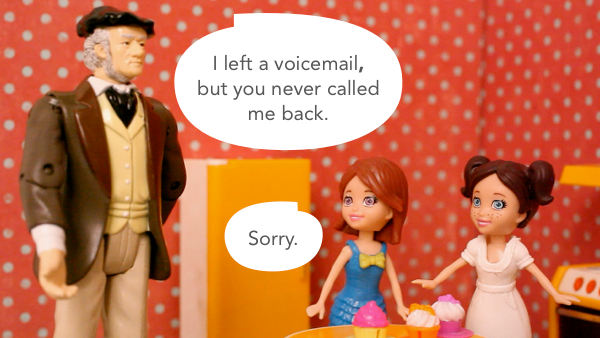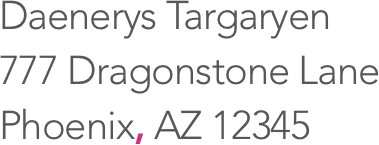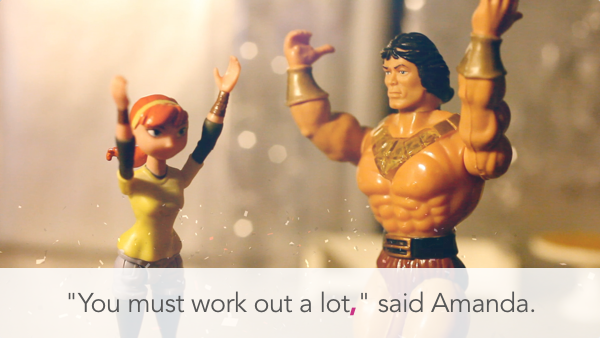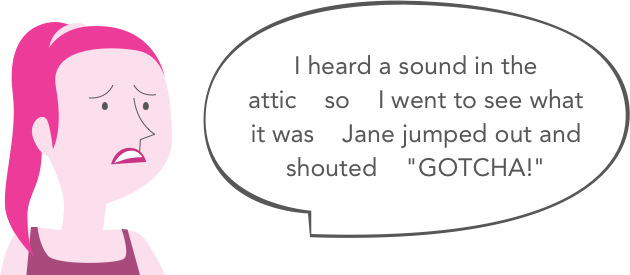Grammar
Commas
What is a comma?
A comma is a punctuation mark that can be used in many different ways. Mainly, it's used to separate things—for instance, two thoughts in a sentence, multiple adjectives, or items in a list.

That are lots of rules that tell us how commas should be used, but don't let that scare you. With a little practice, it'll start to feel like second nature. Some rules are set in stone. They work the same way every time, so you don't have to think about them too much. Other rules are more complicated. In those cases, you have to understand the meaning of the sentence to know when and where to use the comma.
Using commas
The basic rules for using commas are pretty foolproof. In other words, they're easy to apply to your writing because they always work the same way. You don't have to worry about any special exceptions or wonder where the comma is supposed to go. Each rule tells you exactly what to do.
Joining two sentences
You already know how to join two sentences using conjunctions like and, or, but, and so. We do it all the time in regular conversation, if not in writing.

As you can see, the comma goes between the two sentences, right before the conjunction. It tells you where one thought ends and another one begins. Placing the comma after the conjunction would be incorrect because the conjunction is part of the second thought.

Listing items in a sentence
Commas can also be used to separate three or more items in a list. Just place a comma between each item (and an appropriate punctuation mark at the end). The last item is usually joined by a conjunction like and, or, or nor. Like the rule for joining sentences, the comma goes right before the conjunction.
![]()
Place names and dates
There are certain types of place names (for example, city/state and state/country) that are always separated by a comma when you write them out. You can see this rule in action on any mailing envelope.

Phoenix is a place inside Arizona—that's why there's a comma between the city and state. This rule applies whenever you refer to a place in a similar way, whether it's MTV Studios, Times Square (which isn't even a city, state, or country) or England, United Kingdom.
Dates work almost the same way. For instance, when you write the full date, it should look something like this: January 1, 2014. It's almost as if the day and the month are inside the year—which is true, in a way. We're talking about January 1st in the year 2014. That's why there's a comma between the date and year.

Quotations
Quotations are usually made up of two things: a quote (what the person said) and a tag (the person who said it). Commas play an important role too—they separate the quote from the tag, so we can tell they're separate but connected.

So where does the comma go? It depends on the layout of the sentence. Here are three examples.
- Before the quote: Vanessa asked, "Is anyone else hungry?"
- After the quote (inside the quotation mark): "I could go for some pizza," said Elizabeth.
- Both ways (in the middle of a quote): "I want pizza," said Rick, "but not with anchovies!"
To learn more, take a look at our lesson on Quotation Marks.
There are two commas missing from the example below. Can you tell where they're supposed go? Click the dots to see if you're right!

Nope!
That's not quite right, but you're close. Remember: when joining two sentences, the comma always goes before the conjunction.
That's right!
This is where the first comma should go—right before the conjunction. It tells you where one thought ends (I heard a sound in the attic) and another one begins (I went to see what it was).
Try again!
This should be a period, not a comma. You can tell because the next sentence is a complete sentence (and there's no conjunction joining them together).
Correct!
This is a good example of a quote that comes after a tag. In a case like this, the comma always goes before the quote (outside the quotation marks).






